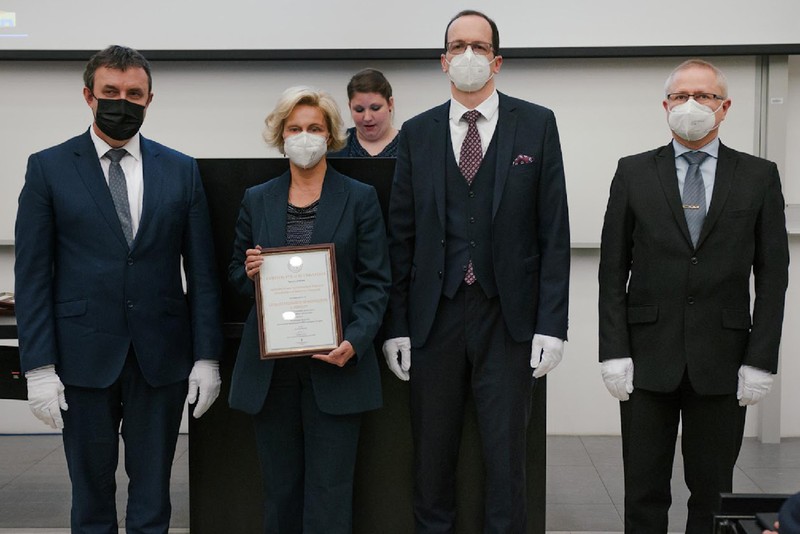Several research units of the University of Debrecen are included in the list of the 50 best Hungarian research sites with infrastructure in the National Office for Research, Development, and Innovation.
At the initiative of the National Research, Development and Innovation Office, the most outstanding Hungarian research infrastructures were recognized for the first time. The aim of the National Research, Development and Innovation Office national survey was to identify the best Hungarian research units.
The diplomas for the excellent qualification were presented by László Palkovics, Minister of Innovation and Technology, in Pécs.
Among the research infrastructures of the University of Debrecen, the Research Center for Chemical Analysis and Molecular Structure in Eastern Hungary, the Hungarian Cellular Imaging Euro-BioImaging Node, the Hungarian Medical, and Preclinical Imaging Euro-BioImaging Node, the Agricultural and the Food Innovation Research Infrastructure University of Debrecen, the University of Debrecen BMBI Proteomics Service Laboratory and the Materials Science Research Network of the University of Debrecen Nuclear Research Institute have been awarded the Excellent Research Infrastructure qualification. The diplomas were received on 16 December by Szilvia Veres, Deputy Dean of the Faculty of Agriculture, Food Science and Environmental Management, György Vámosi, Senior Research Fellow of the Faculty of Medicine, and Ákos Kuki, Associate Professor of the Faculty of Science and Technology.
Several research units of the Nuclear Research Institute have also been awarded the title of “Excellent Research Infrastructure”.
Minister of Innovation and Technology László Palkovics highlighted the MIT Catalyst program among the international research collaborations at the awards ceremony.
Coordinated by the University of Debrecen, the project covers the whole of Central Europe. The program is past a successful period, with 15 of the more than 100 projects entering the second phase. We are already in talks with MIT to expand the Catalyst program, which only works in the field of health sciences.
– the minister stressed.
László Palkovics emphasized that one of the defining results of the transformation of the research system started in 2018 was the creation of the support elements that support all stages of the process, from the origin of the idea to the birth of marketable goods. He added that funding for research and development has doubled by 2021 and that amount will continue to grow with the change in the university model.
In his speech, István Szabó, the scientific and international vice-president of the National Office for Research, Development, and Innovation, emphasized that the award is not for the tools, but for the professionals and researchers who operate them.
The survey of scientific infrastructures started already in 2008 with the aim of stimulating and opening up the research community. The award-winning research units represent international standards. Our goal is for these to be visible across borders and for young professionals to get to know them at home.
– the vice-president emphasized.
Based on the certificate, the research centers are entitled to use the title of “Excellent Research Infrastructure”. The organizations will be included in the Innovation Office’s database, which will help the research units to become widely visible and networked internationally.
hirek.unideb.hu
Photo: Csaba Csortos / University of Pécs


















